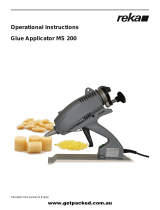
3
1 Introduction ............................................................................................................................................4
1.1 Instructions ...............................................................................................................................................4
1.2 Safety Instructions ....................................................................................................................................4
1.3 Environment .............................................................................................................................................5
2 Product Description ...............................................................................................................................6
2.1 Device Overview ......................................................................................................................................6
2.2 Function ...................................................................................................................................................8
2.2.1 Sensor .....................................................................................................................................................8
2.2.2 Pneumatic ................................................................................................................................................8
2.2.3 Elektronics / PCB Labelling Contriol ......................................................................................................11
3 Maintenance / Cleaning .......................................................................................................................12
3.1 Tools .......................................................................................................................................................12
3.2 Cleaning .................................................................................................................................................12
4 Replace Assembly Units......................................................................................................................13
4.1 Instructions for sticking Slide Foil onto the Pad ....................................................................................13
4.2 Replace Valves ......................................................................................................................................14
4.3 Replace PCB Applicator Control ............................................................................................................15
4.4 Replace Controller .................................................................................................................................15
4.5 Replace Cylinder ....................................................................................................................................16
4.6 Replace Cylinder-Sensor .......................................................................................................................17
5 Troubleshooting and Fault Clearance ............................................................................................... 18
5.1 Sensor Labeling Position / Sensor Start Position ...................................................................................18
5.2 Function of the LED's in the Applicator Electronics ................................................................................18
5.3 Pressure Measurement ..........................................................................................................................19
5.4 Error Indication .......................................................................................................................................20
6 Block Diagram ......................................................................................................................................22
7 Pneumatic Drawing ..............................................................................................................................23
8 Circuit Diagram PCB Applicator Control ........................................................................................... 24
9 Terminal Diagram PCB Applicator Control ........................................................................................27
10 Circuit Diagram PCB Applicator Interfaces .......................................................................................28
11 Terminal Diagram PCB Applicator Interfaces ....................................................................................29
12 Cicuit Diagram Valve Block .................................................................................................................29
13 Index ......................................................................................................................................................30
Table of Contents





















